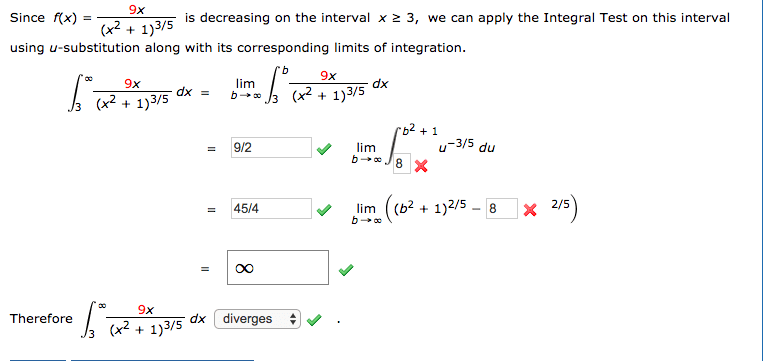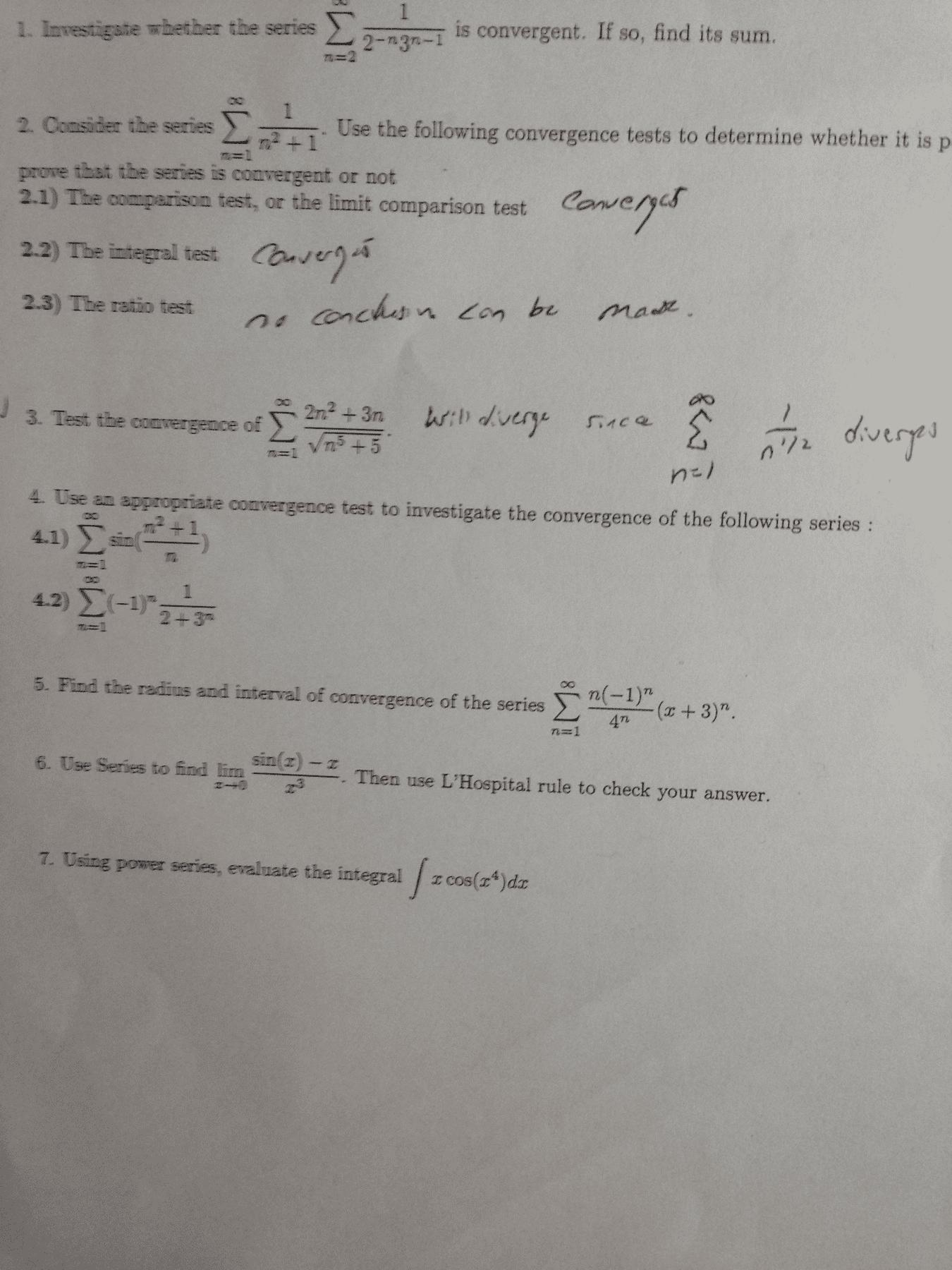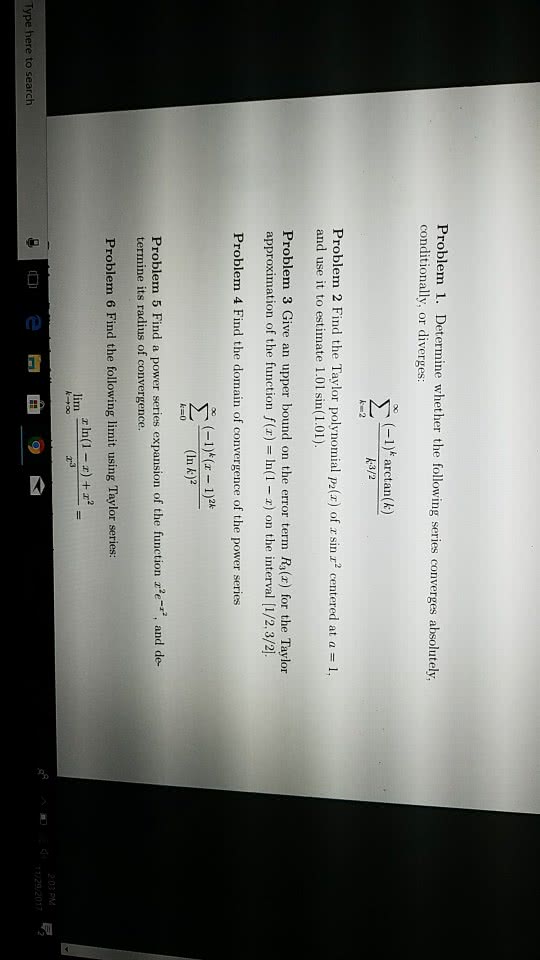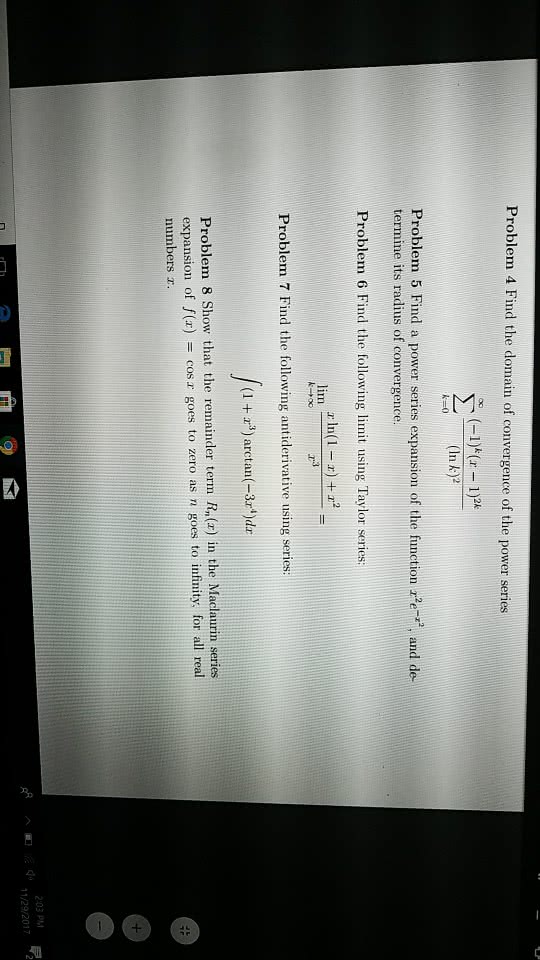MAT136H1 Chapter 7b: MATH136H1_Class7B


92
MAT136H1 Full Course Notes
Verified Note
92 documents
Document Summary
Math136h1 class 7b convergence of taylor series. Sin(cid:272)e 1+1+1+1+ and 1-1+1-1+ (cid:271)oth diverge (by the divergence test), the interval of convergence is. || =lim ||=|| converges with ||(cid:883). The power series expansion of sin is given b. Therefore, the series converges for all and the radius of convergence is . The interval of convergence is (cid:4666) , (cid:4667) and we say that sin(cid:4666)(cid:4667)= (cid:4666) (cid:883)(cid:4667) Steps for determining interval of convergence: apply the ratio test, use your results to determine the radius of convergence. If it is zero or infinity, you are done. Example: determine the radius and interval of convergence of. || =lim |(cid:4666) (cid:883)(cid:4667)+(cid:2869) lim |+(cid:2869)| (cid:4666)+(cid:883)(cid:4667)(cid:885)+(cid:2869)| | (cid:885) (cid:4666)+(cid:883)(cid:4667) (cid:885) =| (cid:883)|(cid:885) (cid:4666) (cid:883)(cid:4667)|=lim |(cid:4666) (cid:883)(cid:4667) | Need to know what happens at = (cid:884) and =(cid:886) Diverges because it is the negative of the harmonic series. Suppose that (cid:4666)(cid:4667) represents the taylor polynomial of degree of (cid:4666)(cid:4667) near =(cid:882).









